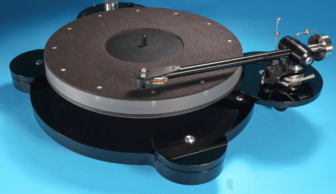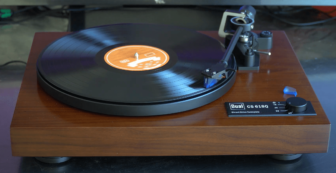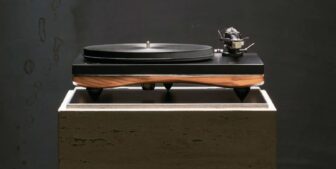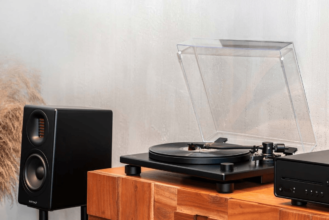Transrotor Strato Nero Review
As straightforward as the Strato hasn’t been for a long time – and so complete. Even a dust cover is included. 7Review tests the black “Nero” version of the highly equipped newcomer.
by Matthias Böde
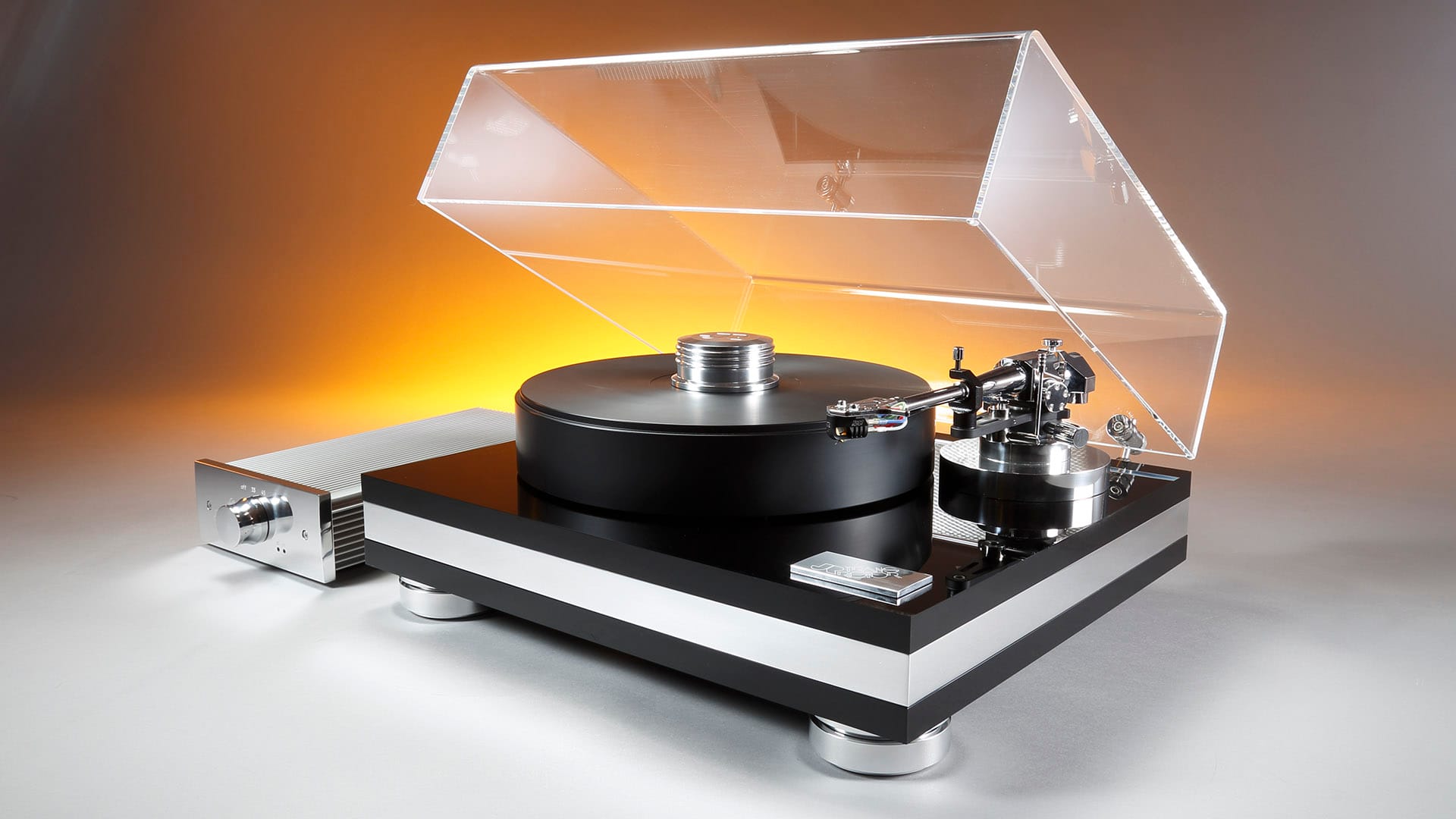
Complete turntables – not so long ago, one primarily thought of offers in the lower price range. Indeed, the trend of relieving the buyer not only of the decision over the tonearm but also for the mechanically and qualitatively appropriate cartridge has increasingly shifted into higher classes – often associated with an attractive total price. And even the noble manufacturer Transrotor in Bergisch Gladbach likes to successfully put together such sensibly assembled all-round carefree packages for its demanding but sometimes not so deeply rooted clientele.
Image Gallery
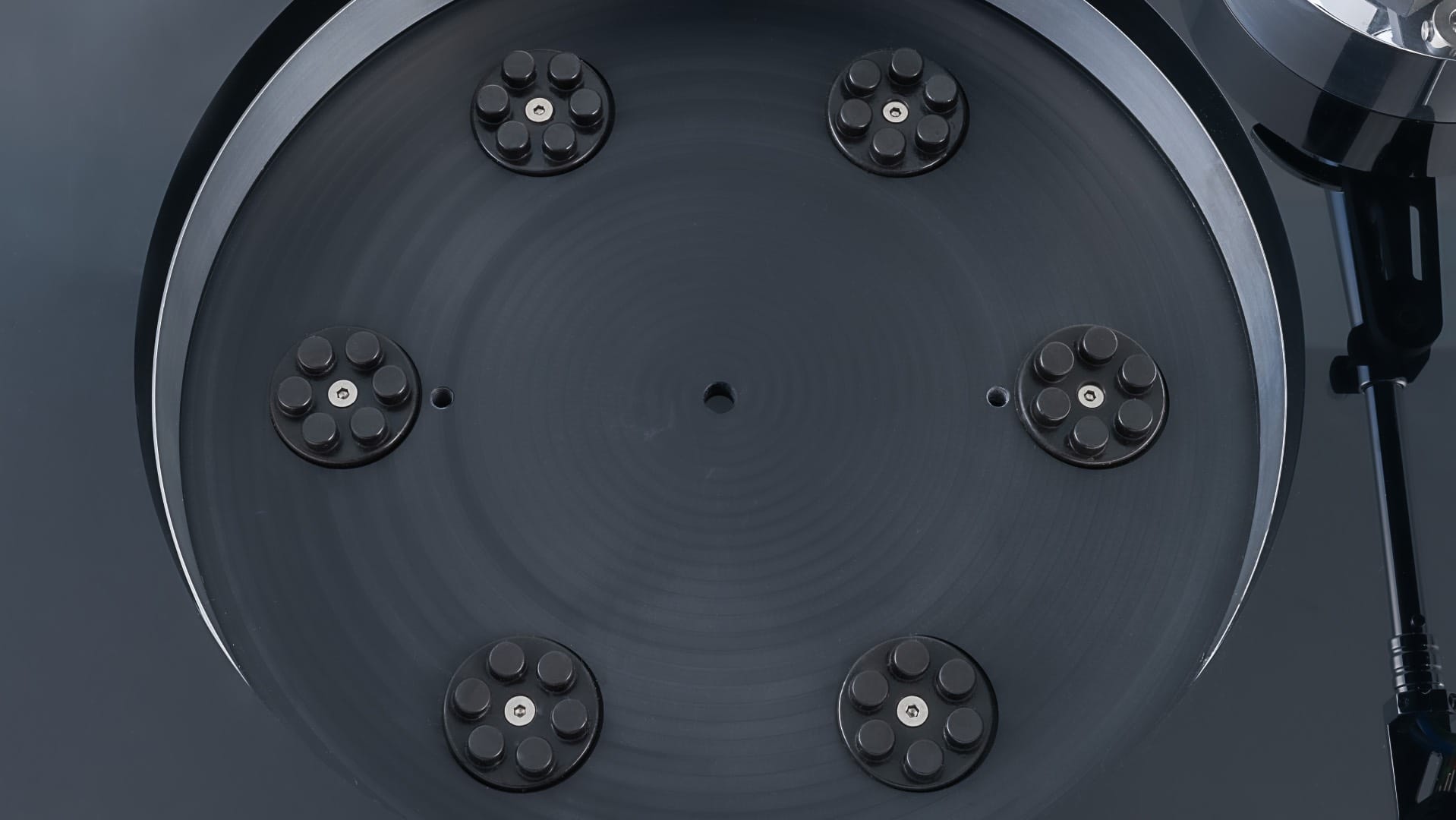
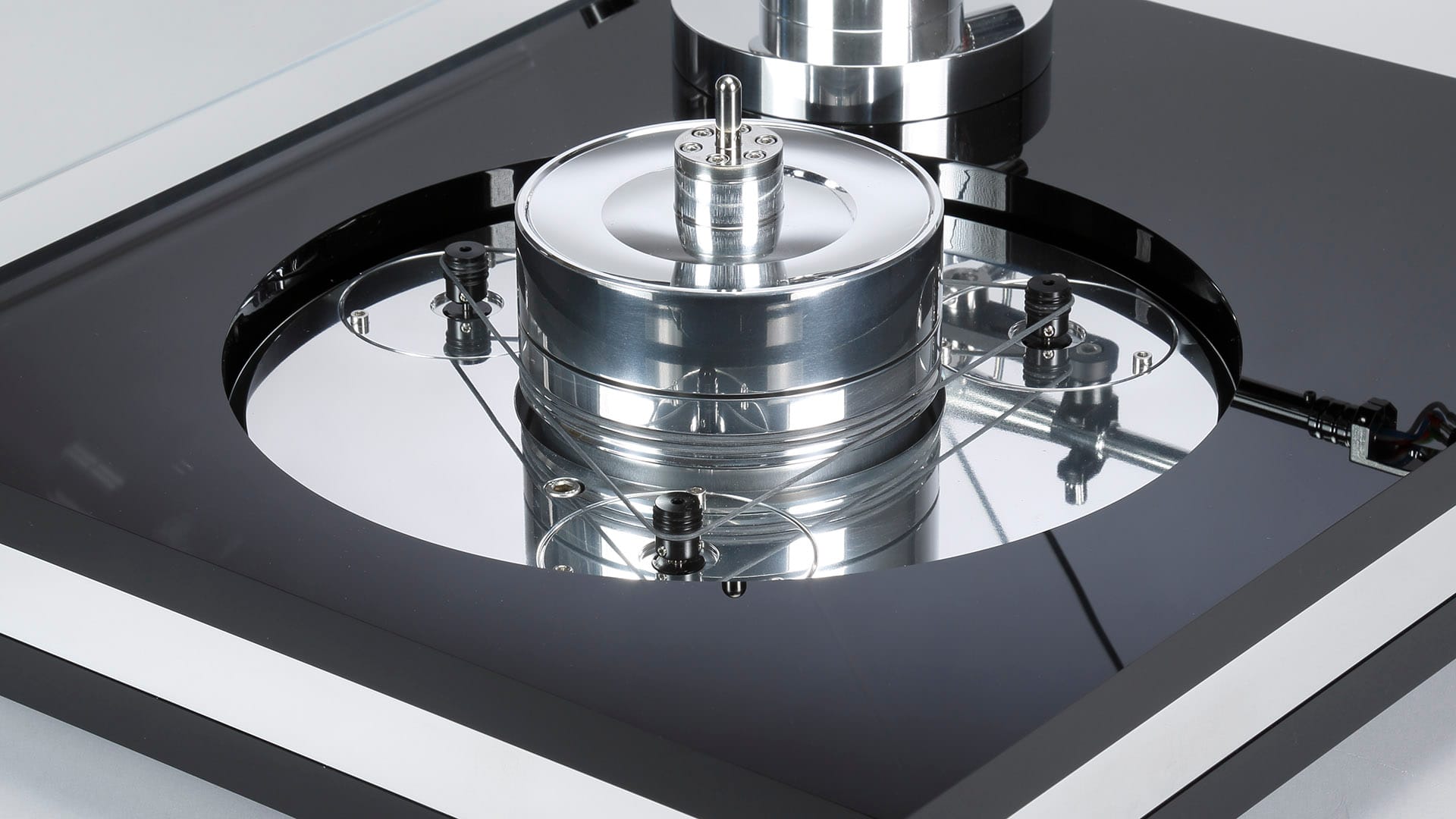
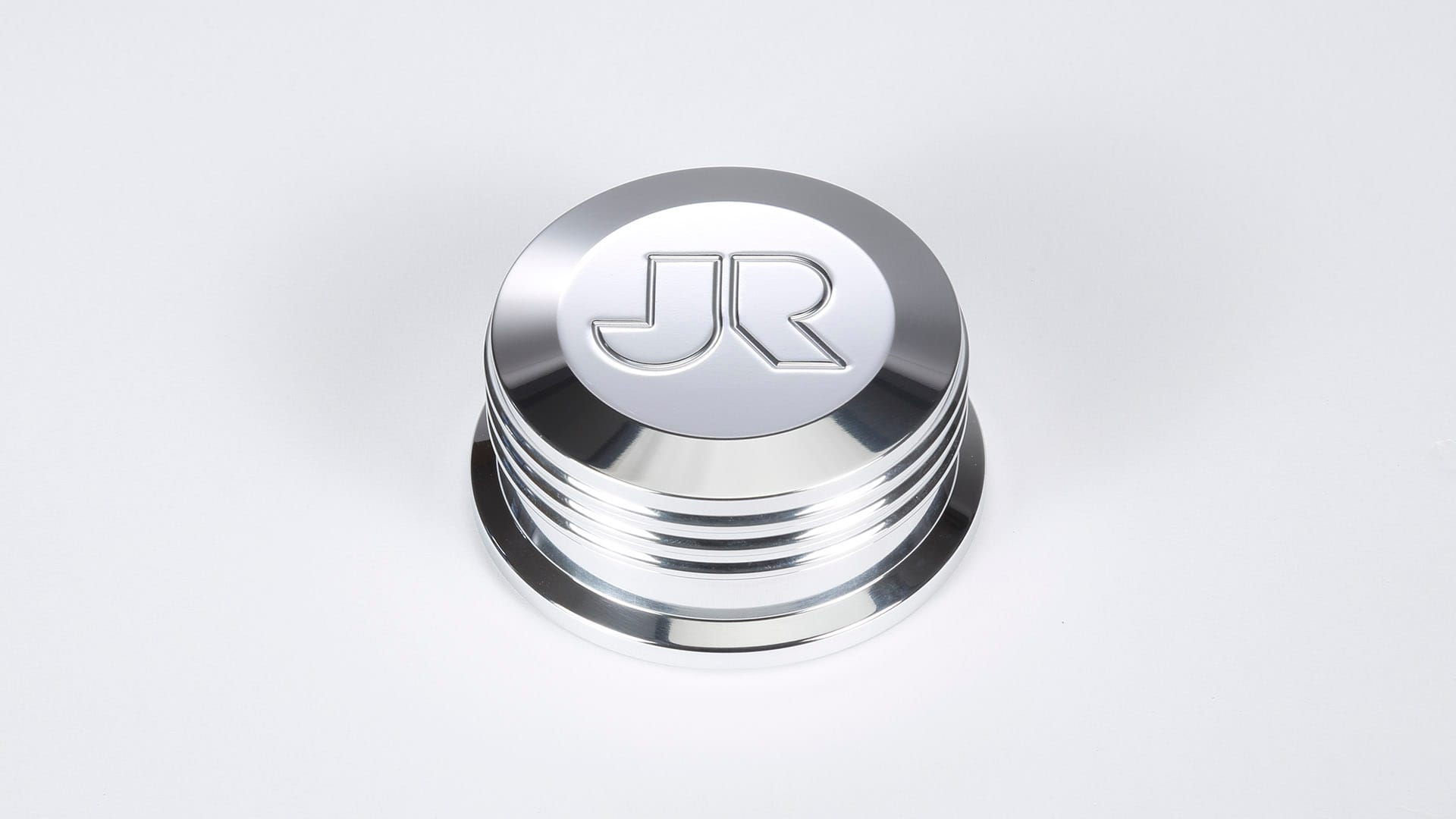
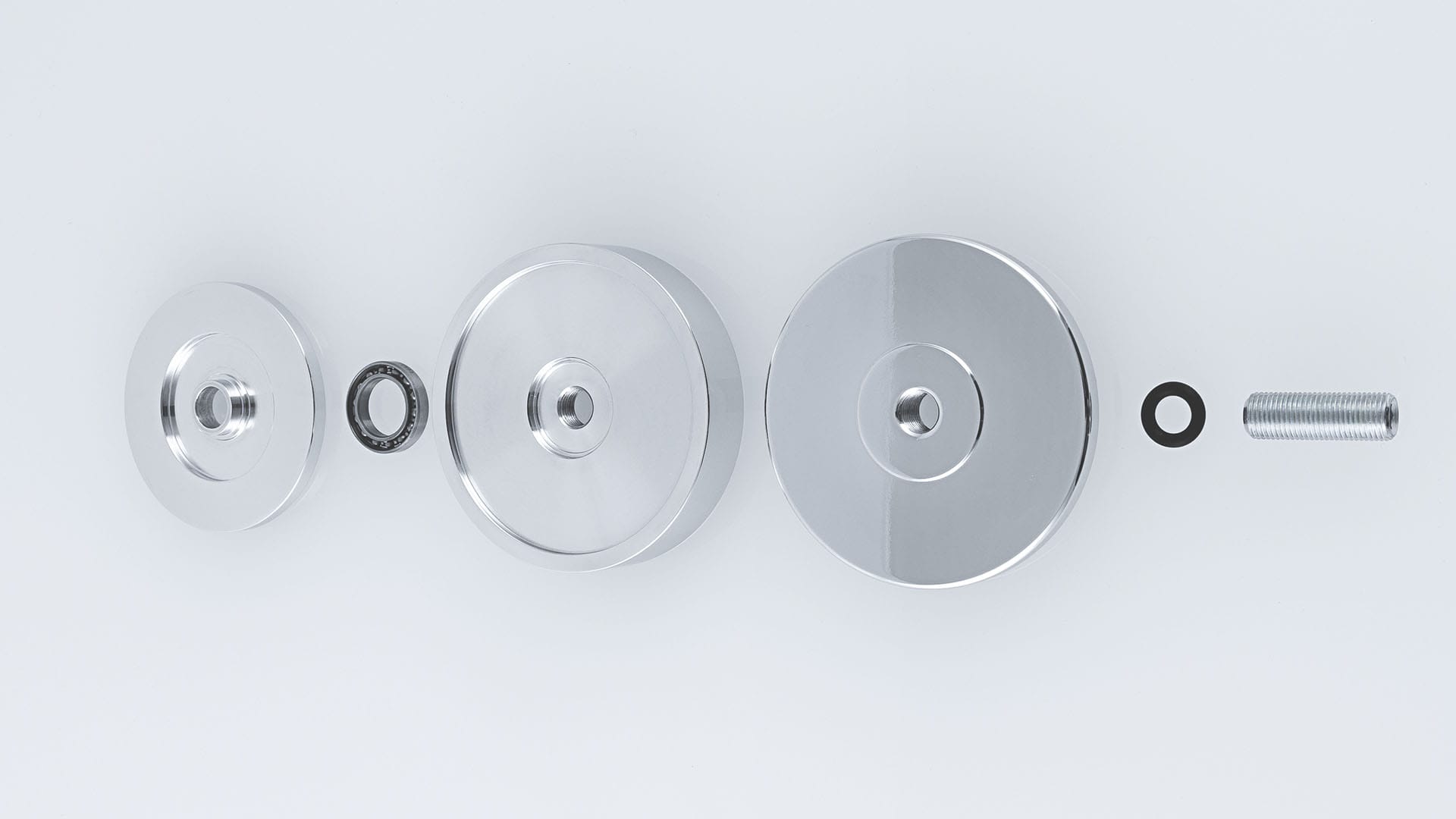
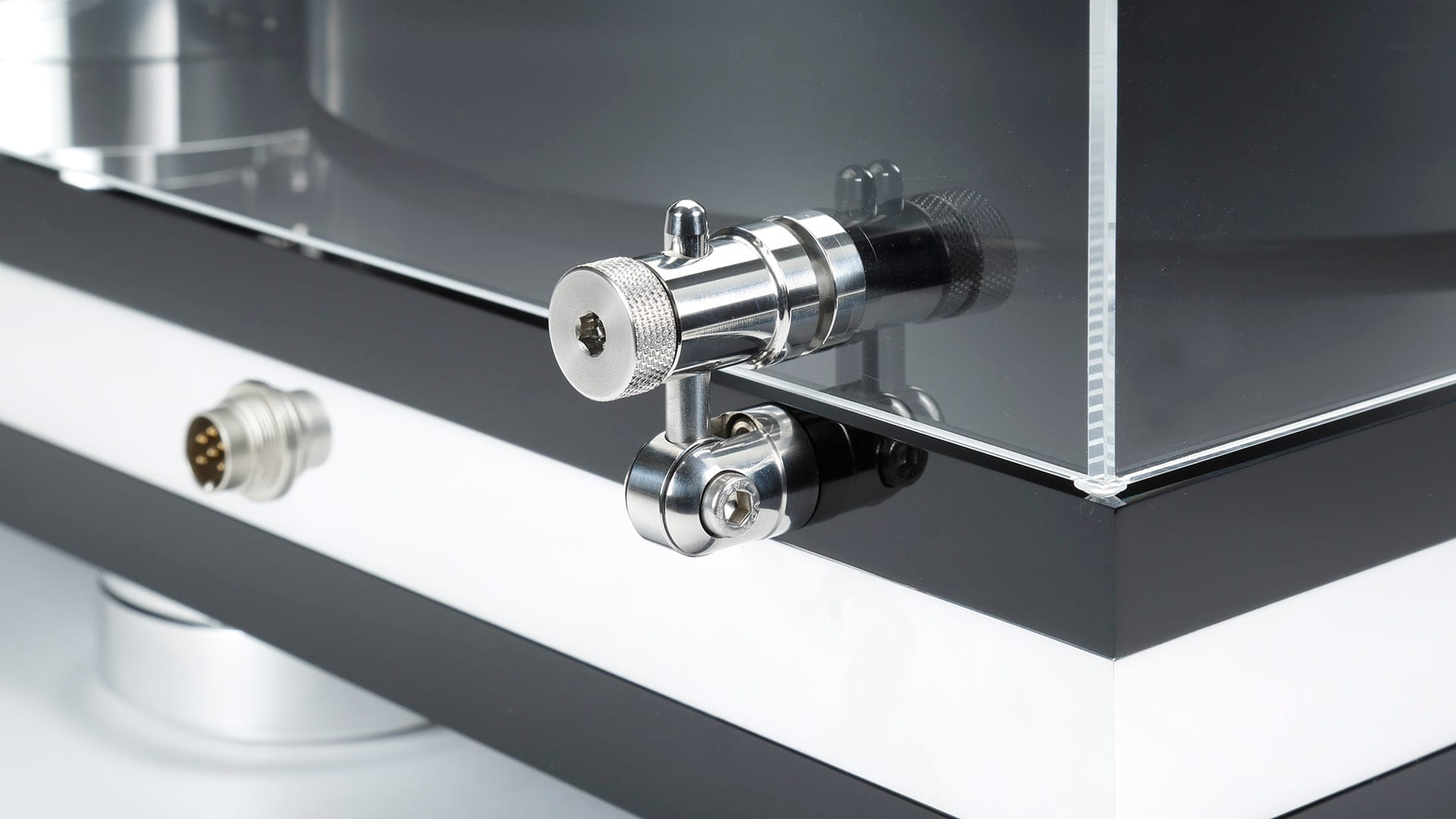
Recently and at top level with the new, around 32-kilogram high-end model Strato, which as a complete solution including the large Transrotor tonearm TRA9—in this case in chromed version—the top MC Figaro cartridge, and the elaborate external power and control unit Konstant FMD comes to exactly $21,000. A sophisticated phono cable, optionally configured with WBT’s high-quality “Nextgen” RCA plugs or XLR connectors, is also included, as well as an electronic tonearm scale and a record puck adorned with the initials of Transrotor founder Jochen Räke.
The Strato is available in a black “Nero” as well as a white “Bianco” variant. The versions differ on the one hand in terms of the color of their two 20-millimeter-thick acrylic layers, which enclose a solid 30 mm thick aluminum plate and together form the stable backbone of the sandwich chassis, whose material mix is intended to achieve optimal vibration damping. The platter of the Bianco is also made of light acrylic, while the dark 5.3-kilo record surface of the Nero is made of the extremely resonance-poor special plastic POM.
The six-centimeter-high platter, which recedes slightly at the upper edge, simplifying record changes during rotation, rotates on a “Transrotor Magnetic Drive” bearing, or TMD for short, driven by three synchronous motors. The two cylinders of the TMD bearing, which can be twisted against each other, are coupled via three magnets in such a way that, on the one hand, the defined drive is ensured, but minimal fluctuations are buffered by the “soft” magnetic field.
To level out the slightest inhomogeneities in the short round belts, each of the three motors arranged around the TMD bearing drives its own belt. A positive side effect: The pull on the bearing is thus identical from all sides, which also benefits its smooth running, which the Strato proved not only in the listening room but also in the lab in the form of superbly low wow and flutter values.
Three Motors in the “Big Block”
The trio of motors is embedded in a massive aluminum block, which in turn rests on six flat, knobbed rubber dampers that decouple it from the chassis and thus also from the tonearm. The latter is Transrotor’s high-class TRA9, which the analog specialists from Bergisch Gladbach mounted on a hefty aluminum base. Two set screws ensure intimate contact between this and the arm shaft.
In the course of our test, the TRA9, equipped with a two-part tube made of a special aluminum alloy, whose bearing yoke is milled from a piece of the light metal, profiled itself in every respect as a top product that can easily hold its own against international competition. Since then, it adorns in black base version Transrotor’s Rondino Nero turntable, used as a reliable workhorse in the editorial office. In fact, the tonearm is also available in gold-plated and a “Ruthenium” version with a platinum look for an additional charge. On the Strato—regardless of whether Bianco or Nero—it has a glamorous appearance in chrome.
The manufacturer targets, with this turntable to which a thick-walled acrylic dust cover belongs, owners of timelessly modern styled components à la AVM or Burmester. My tip: Equip the black Strato with gold-plated metal parts including the corresponding TRA9, and MBL fans will be thrilled!
Especially since the Figaro MC, part of the set and supplied by the English specialist Goldring, has lost none of its outstanding status or high-end appeal since its test. On the contrary, the precisely manufactured moving-coil cartridge, whose cantilever carries a diamond with a faceted “Vital” cut, proves itself anew every day, stoically tracking any critical passage at practical 1.9 grams of tracking force, running smoothly at the terminating impedance of 100 ohms offered by any phono preamp, and requiring no other extras. Since it is also strictly linear in design and sonically impressive in every way, the Figaro from our test operation has long since become indispensable.
Simple in Setup
A good acquaintance not only from our work turntable Rondino Nero is the uncompromisingly designed large power supply in the heat sink housing. The drive frequency, precisely formed via a so-called Wien bridge, is stably delivered to the synchronous motors via a powerful supply. Using the massive rotary knob in the center of its chrome front, you can select 33.33 or 45 RPM. Two tiny openings at the bottom right offer access to the mini potentiometers for the individual fine adjustment of the two speeds. Thanks to the approximately one-meter-long power cable, the already very low-radiation Konstant FMD can be placed away from the turntable to keep any interference fields, especially from the cartridge, at bay.
The setup of the Strato is very simple, provided the Figaro MC has already been pre-mounted by the manufacturer or dealer. If not, an alignment template and an electronic tonearm scale for setting the unscaled counterweight are included. Thanks to their sophisticated design with small ball bearings, the three feet make leveling the heavy luxury turntable a breeze. Their smoothly running outer ring can be easily adjusted, allowing you to finely tune the correct height.
In the large listening room, Transrotor’s Rondino Nero was already waiting for the latest family addition. As mentioned, a TRA9 with Figaro mounted at its tip with exactly the same tracking force was also mounted on this one. In addition, the power supplies and phono cables up to its “Nextgen” connectors were identical, and the turntables stood side by side on the same rack. A fairer comparison is not possible! In the mentioned configuration, the price of the Rondino Nero is currently also very similar at $19,000.
Anyone who thinks that this meeting of the two Transrotor turntables would be a dead heat without clear differences due to their many identical parts—the Rondino Nero also combines acrylic with aluminum in its curved chassis—is mistaken. In fact, the two from Bergisch Gladbach met at the highest level, but with their own audiophile signature.
Prime examples can be heard with “Joy Ride” from the ambitious, purely analog produced album “A Soulful Journey” by Sob & The Czyks. While the Rondino Nero, for all its sovereignty, created a slightly heated, driving atmosphere, the black Strato almost leaned back a bit, as its presentation appeared more relaxed. It moved the sound image slightly further away from the speakers, layered the spatial spectrum even better in height, and illuminated it especially further in depth. This promoted the naturalness of the jazz combo’s performance, seemed equally unforced and committed, because the performance never became erratic over the newcomer but was exciting and always on point.
Individual Audiophile Note
We switched to 45 RPM and to the 7Review “Best of” listening test LP, which offers many of our all-time favorites in the best quality. The simultaneously punchy and charmingly appealing “Strings On Fire!” from Henry Mancini’s pen showed its sparkling verve over both Transrotor turntables, whereby the Rondino Nero again oriented the orchestra more towards the front of the stage, drew a bit more compactly, and thus provided a maximum of immediacy. The Strato presented the event, with the same liveliness, tending to be more transparent, separated the musicians more clearly from each other, and thus brought more air into the presentation. Certainly, no huge, but quite obvious differences that, depending on music and listening taste, can give the decisive impulse.
And so it was: If the new Strato had a slight edge in “The Warmth Of The Sun” by the Beach Boys cover band California Project, because it unfolded their multi-part harmonies even more and gave it the more longing mood, the Rondino Nero acquired minor advantages due to its nuances of denser, more urgent playing style, as well as the minimally more powerful, crisper bass in “Exactly Like You” from Ray Brown’s classic “Soular Energy”.
Everything Fits Perfectly
Nevertheless, at the end, the pendulum of our appreciation and classification swung slightly in favor of its in-house challenger. Because the extremely defined and sharply contoured Strato revealed the somewhat more nonchalant and composed attitude. For it to unfold its full potential, it is necessary to connect the power supply with the correct phase side (see diagram). If the phase is on the wrong side, timing, grace, and spatiality suffer despite decoupling belts and magnetic cushions as well as a heavy platter, which in this case would be particularly regrettable, especially since this optimization costs nothing except a little attention.
Thus, Transrotor has composed its Strato from the finest ingredients into a dream turntable without weaknesses for analog gourmets. Everything fits perfectly here—only the color, you’ll have to choose yourself.
Specs
- Product: Transrotor Strato Nero
- Price: About €20,000 (available in white or black with tonearm TRA9 in chrome, MC cartridge Figaro, and constant power supply FMD)
- Dimensions: 46 x 22 x 43 cm (W x H x D)
- Warranty: 3 years
- Description: “Who says complete offers are nothing for high-end? With its parts and functions at the highest level, Transrotor’s Strato proves the opposite. This model, maintained in a classical style and constructed without compromise, fits seamlessly into the best setups and impresses with its polished sound with every record played.”
- Output voltage: 0.28 mV
- Tracking force: 19 mN
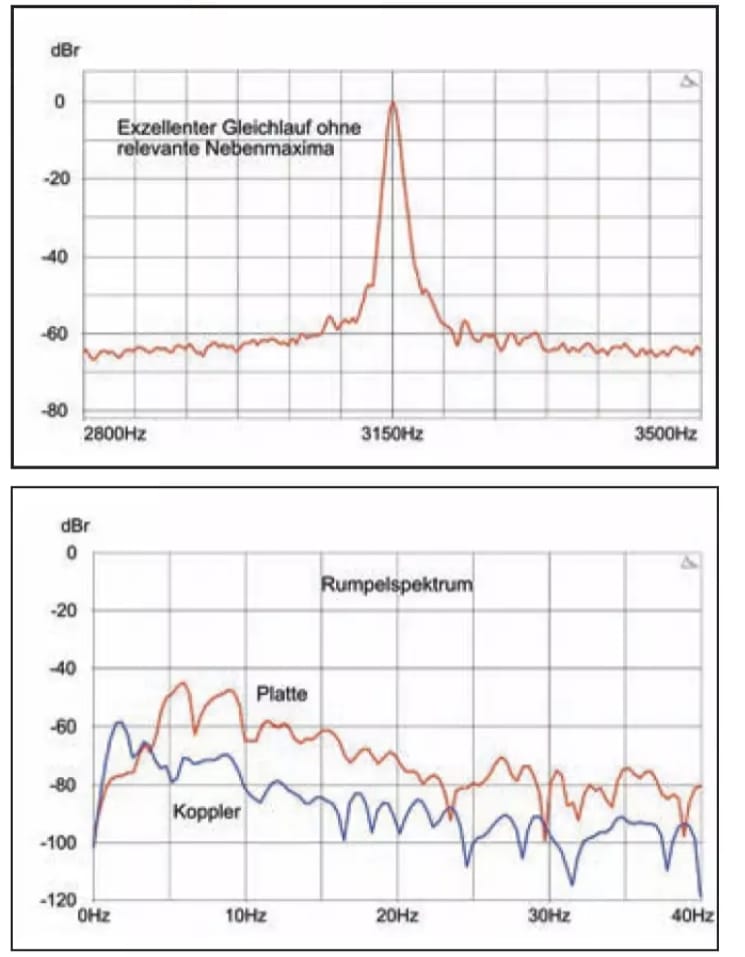
- Lab Comment: “The rumble and speed consistency values approach the limits of our respective measurements. Thanks to the fine speed control on the power unit, both speed values can be set very precisely.”
- Equipment:
- External TMD power unit, individually adjustable speeds, height-adjustable feet and tonearm, electronic tonearm scale, platter-puck, phono cable, dust cover, German operating manual
- Test:
- Sound Level: 100% (10/10)
- Price/Performance: Very Good



